By: Peter Suciu
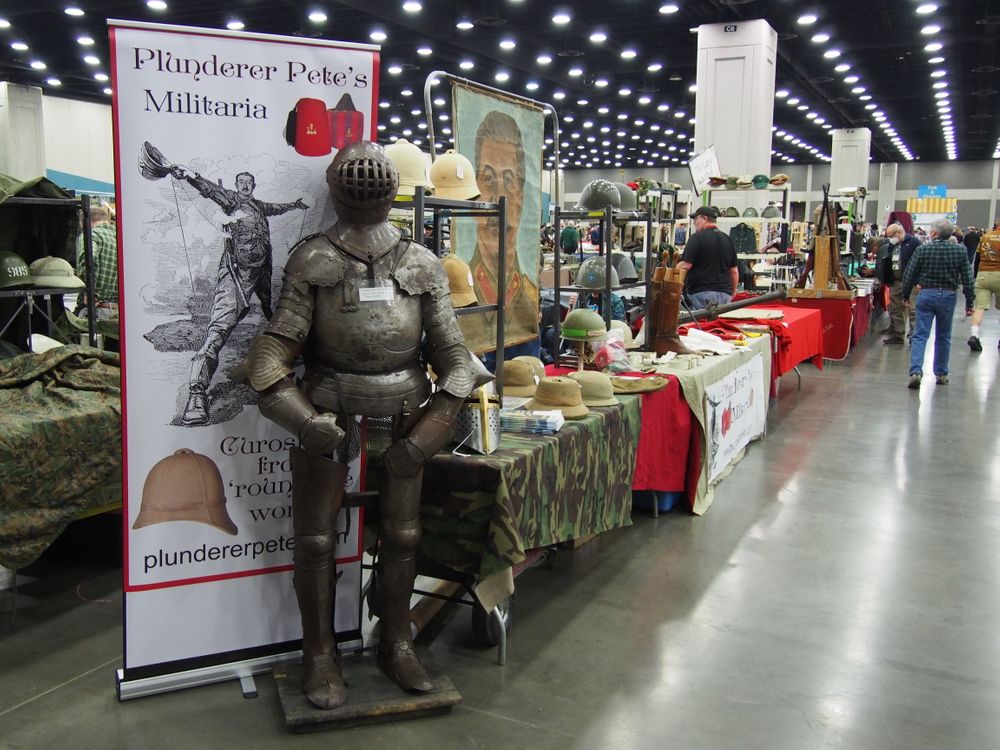
Whether it is an antique suit of armor, helmets, uniforms, or even a Moro “lantaka” cannon from the Philippines, this show features items you won’t find at your average gun show.
The Ohio Valley Military Society’s annual Show of Shows (SOS) remains the largest military collectibles event in North America. Typically held on the last weekend of February – although the 2021 show was moved to July due to the pandemic – it attracts dealers, collectors, reenactors, academics, and historians from around the world.
With nearly 2,000 tables, the show now takes up one of the largest halls of the Kentucky Expo Center in Louisville, and simply put, it would be impossible to put a value on the contents. There is no shortage of rare uniforms, medals, badges, helmets and, of course, rare military firearms. While there is an emphasis on items from the Second World War, it is possible to find vintage ethnographic weapons dating back centuries, and then see modern military firearms.
Because the items are rare, and the collectors’ pockets are possibly deep, the small arms sell quickly, and rarely do items reappear the next year. Last month’s show was noteworthy because some of the firearms are rarely encountered even in museums.
Here is a recap of some weapons found at SOS 2022.
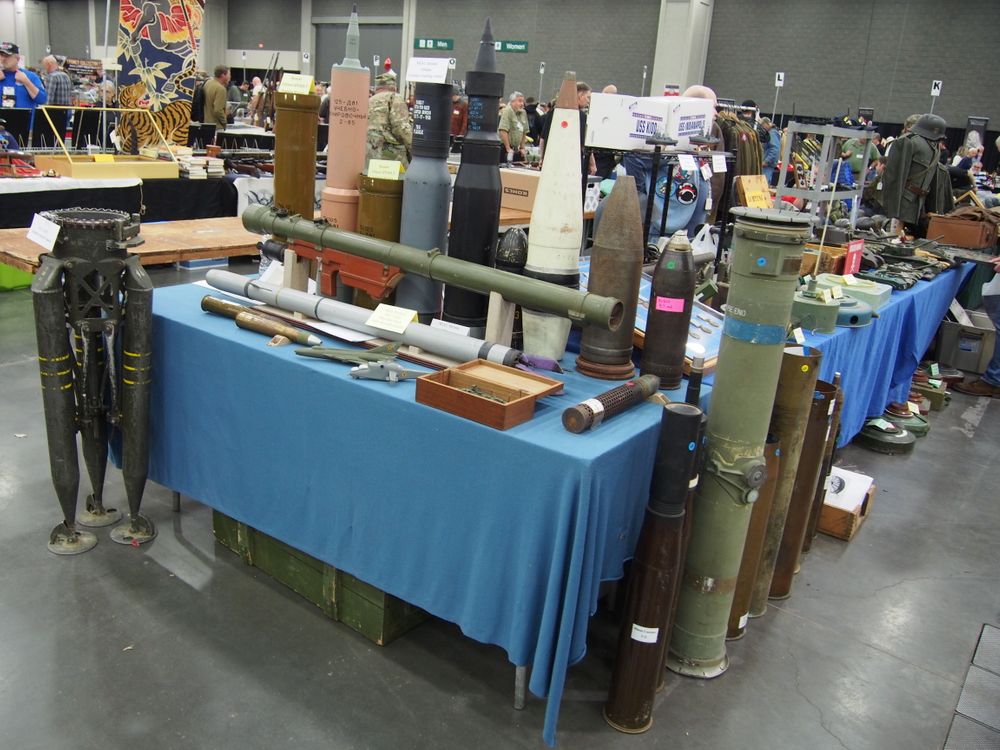
A variety of 20th century ordnance could be found at the Show of Shows, but who would have expected to find a 9K38 Igla (NATO reporting name: SA-18 Grouse) for sale? The Russian, man-portable, infrared, homing, surface-to-air missile (SAM) was first introduced in 1981, and the current model entered service with the Russian military in 2004. This deactivated missile was reportedly brought back from Afghanistan – and likely dates from the Soviet invasion of 1980.
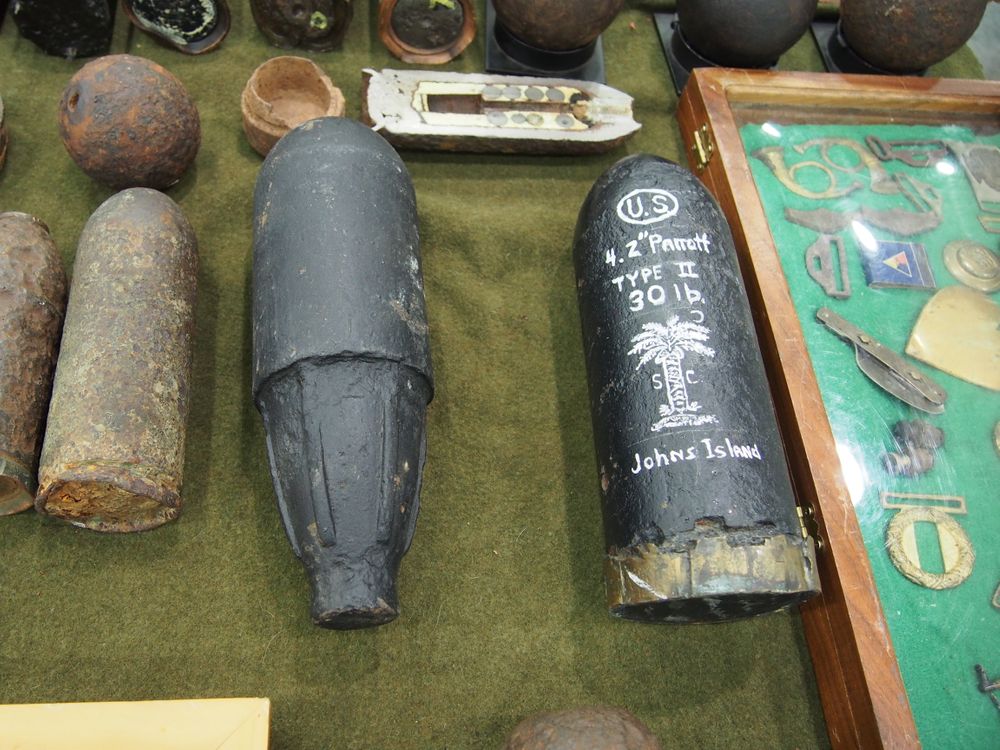
A mix of Civil War ordnance including a 4.2-inch Parrott rifle round that was recovered on Johns Island, South Carolina was at the SOS this year.
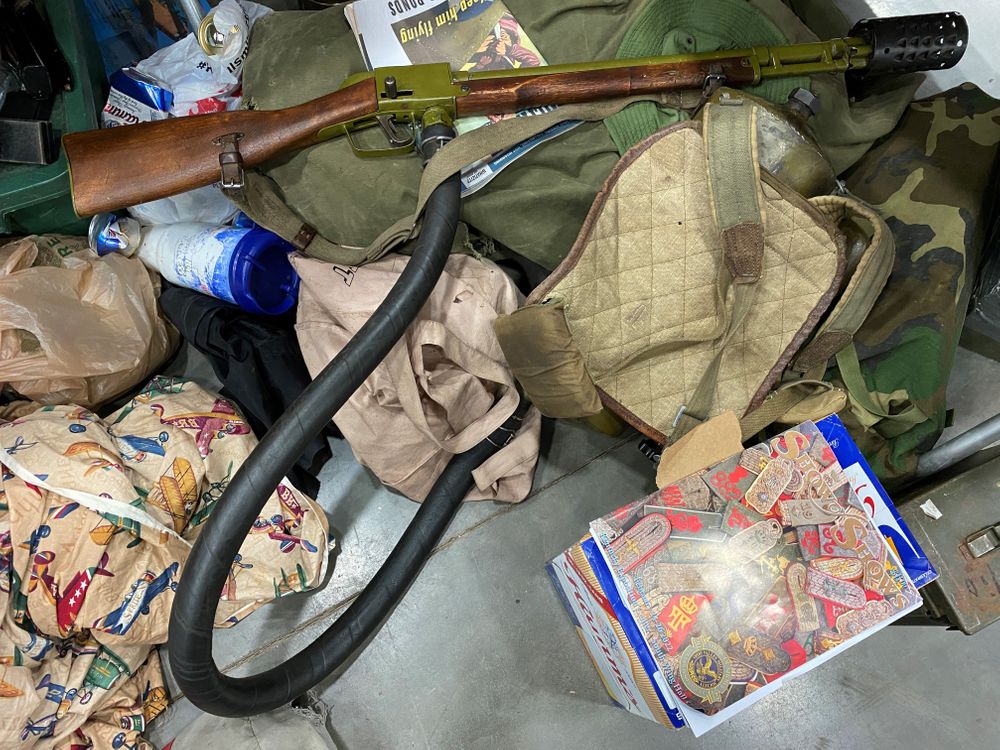
While haphazardly tucked behind the new owner’s table, this Soviet Red Army ROKS-3 flamethrower might have been among the rarest items for sale at the 2022 SOS. It was brought in by the family of a veteran, who did not know how it came to be in the USA. Introduced in 1943, it featured a flame projector designed to resemble a rifle. This flamethrower model was widely supplied to North Korea, Egypt, and Syria during the Cold War.
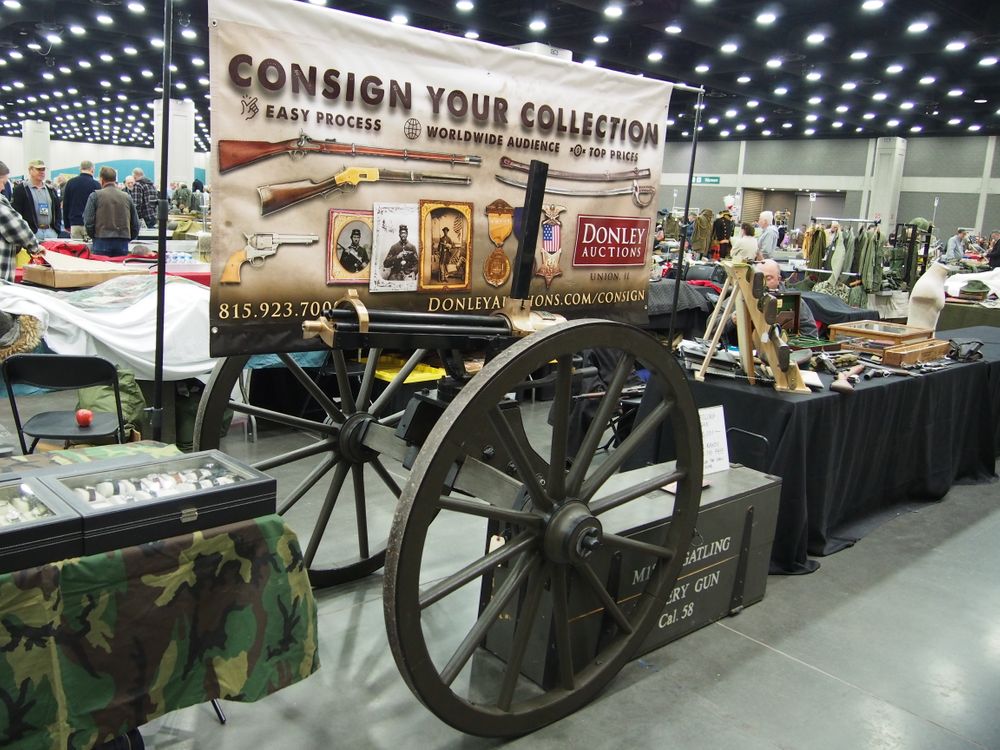
Donley Auctions truly brought out the big guns for SOS, and that included this replica Model 1876 Gatling Gun. While it is a rapid-fire weapon, technically it isn’t a machine gun and can be legally owned in most places that allow semi-automatic firearms!
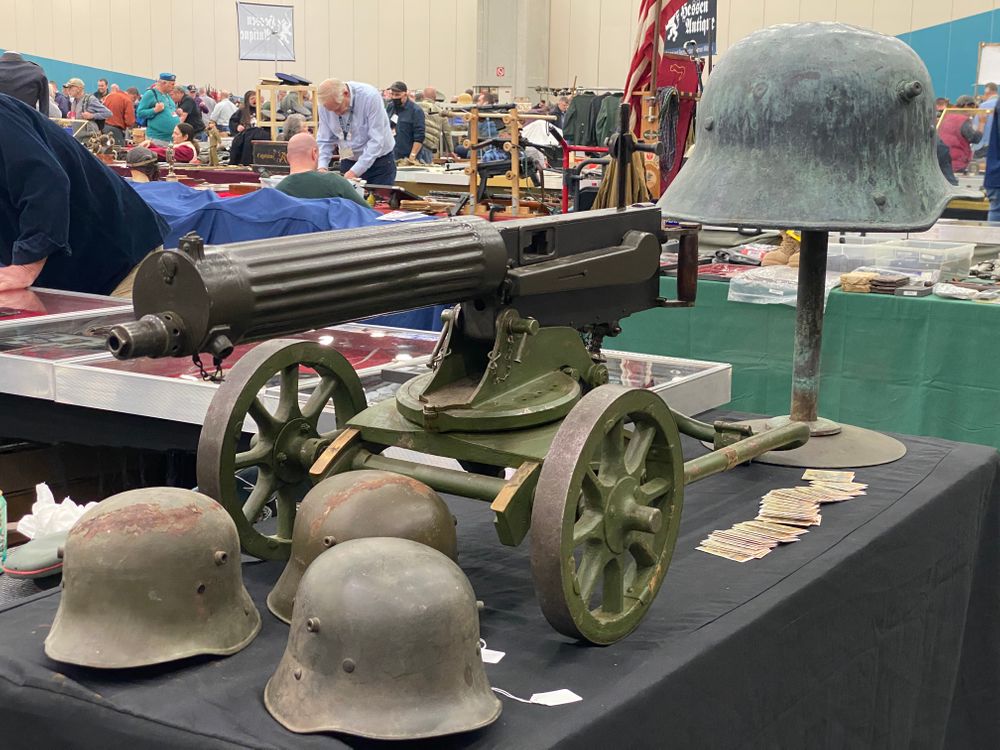
A Soviet World War II era M1910 Maxim machine gun was a hit at the Show. These were first employed by the Russian Imperial Army and remained in use through the Korean War. This model has a “dummy” side plate and can’t fire, but it would be the ultimate “man cave” display. The large German helmet displayed in the gun’s right is from an abandoned World War I memorial. The other helmets have the “Coal Scuttle” pattern worn by the Germans in WWI.
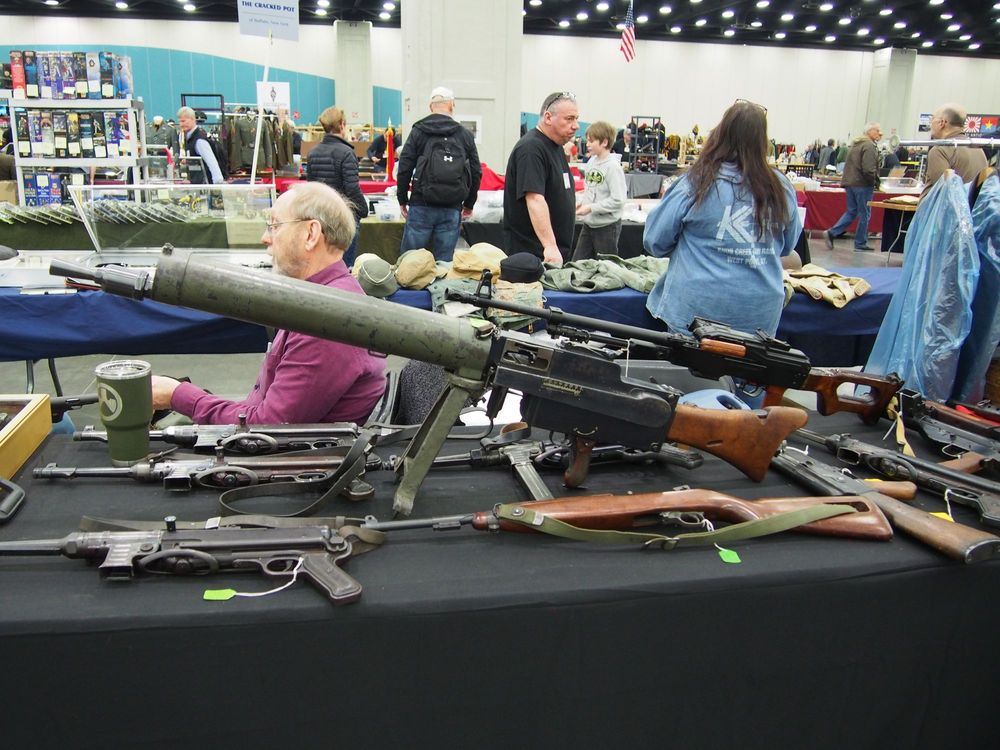
For big spenders, there were these NFA items – all were fully live and ready for a form 4 transfer from the ATF. These NFA’s included five MP40s, the very desirable MG-08/15 – which the Germans considered portable during the First World War – and the Soviet PKM general purpose machine gun. Seeing the two heavy weapons side-by-side showed the evolution of firearm technology between 1915 and 1969!
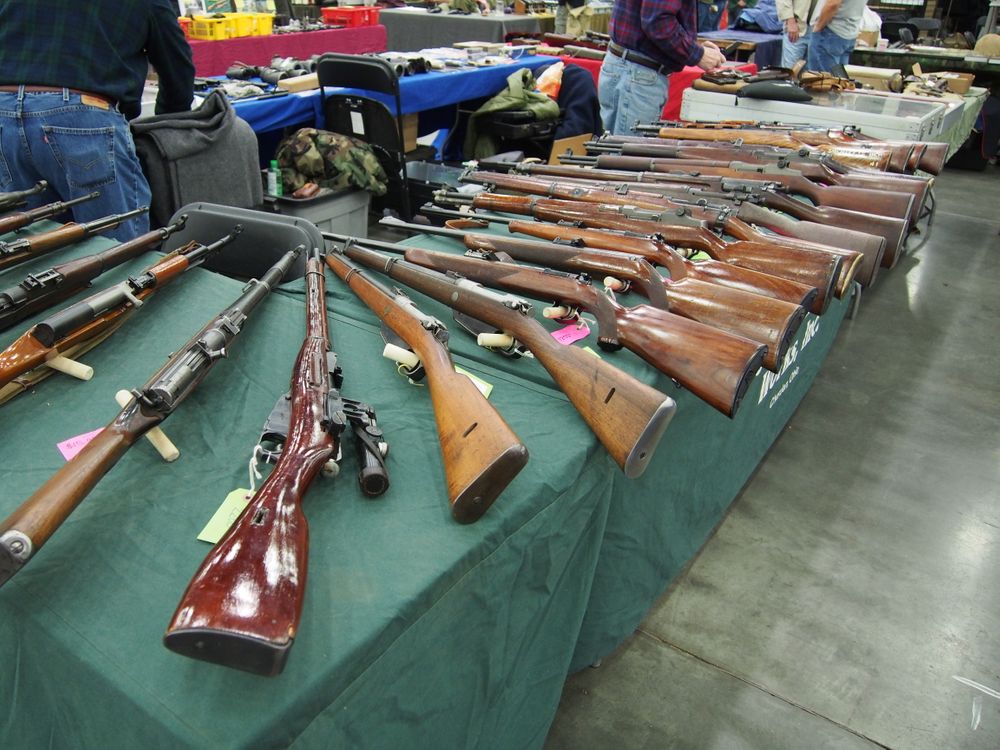
A mix of military rifles – including some that had been sportified – were for sale at the show this year. This dealer had some desirable SKS and M1 Garands for sale. Prices were higher than normal. Who can we thank for that?
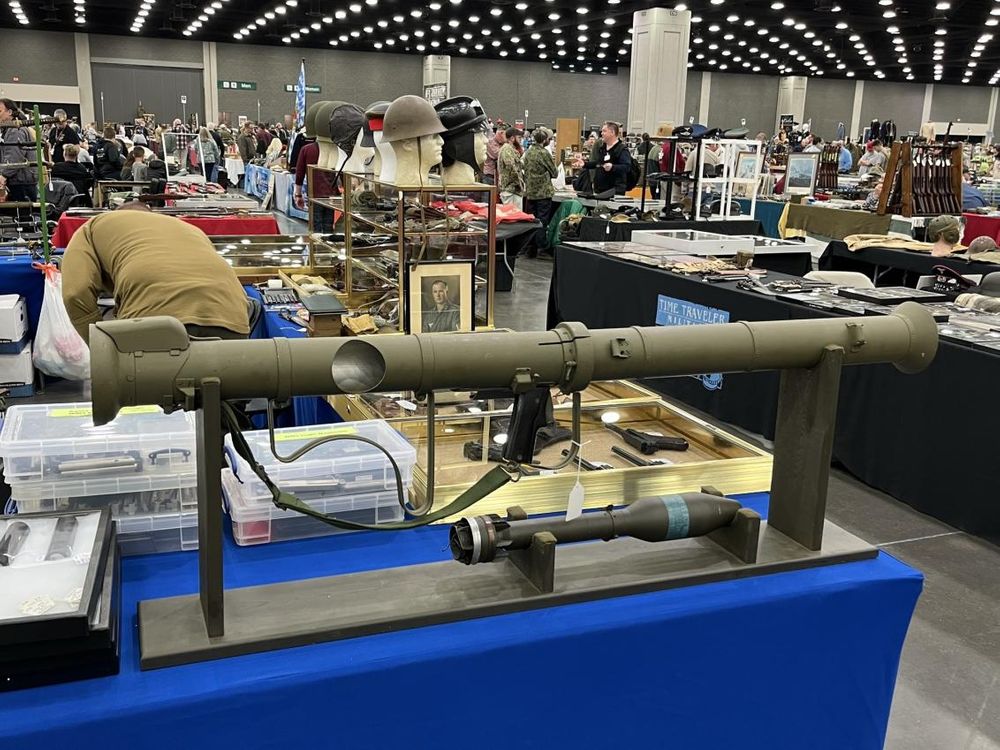
Another ideal “man cave” item is an American M20 3.5-inch (89mm) bazooka – also known as the “Super Bazooka.” This item is legal to own if the end has been blocked with a plate or rod and a hole is cut on the side. These bazookas make cool displays even when deactivated.
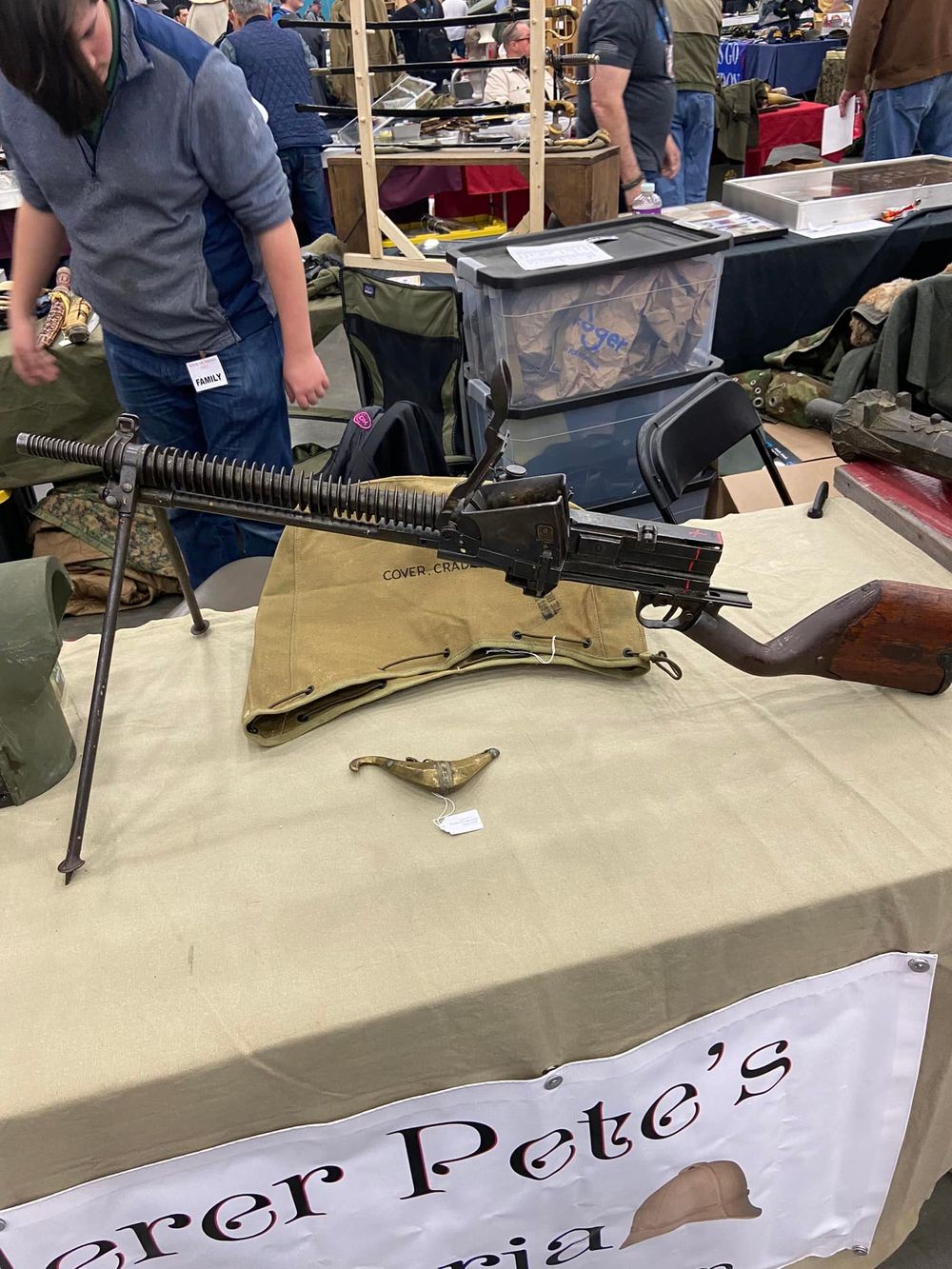
One of the most desirable items of the show (purchased by the author so maybe he’s biased) was this Japanese World War II Type 11 light machine gun. Although the end of the receiver was cut in the deactivation process, and although the sense that this was a terrible design remains, the weapon is still a true piece of World War II firearms history!
